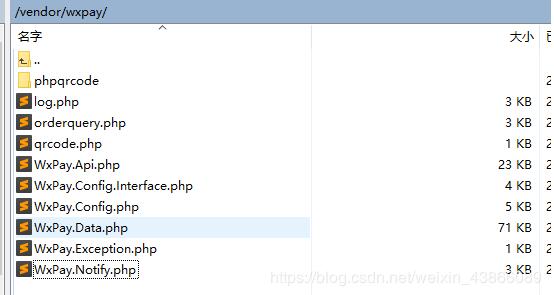一、直接连接,不封装到工具类中,主要步骤:
先导包:mysql-connector-java-5.0.8-bin.jar(点击跳转到下载界面),放在WebRoot/WEB-INF/lib/下
1.加载驱动//com.MySQL.jdbc.Driver
2.获取连接 Connection对象
3.获取用于向数据库发送SQL的Statement对象
4.执行sql,获取数据,解析数据
5.关闭连接,释放资源
?
|
1
2
3
4
5
6
7
8
9
10
11
12
13
14
15
16
17
18
19
20
21
22
23
24
25
26
27
28
29
30
31
32
33
34
35
36
37
38
39
40
41
42
43
44
45
46
47
48
49
50
51
52
53
54
55
56
57
58
59
60
61
62
63
64
65
66
67
68
69
70
71
72
73
74
75
76
77
78
79
80
81
82
83
84
85
86
87
88
89
90
91
92
93
94
95
96
97
98
99
100
101
102
103
104
105
106
107
108
109
110
111
112
113
114
115
116
117
118
119
120
121
122
123
124
125
126
127
128
129
|
/*协议:子协议://主机:端口/数据库名*/
Stringurl="jdbc:mysql://localhost:3306/jdbctest";
//mysql数据库的用户名与密码,安装时自己设置,一般默认为root
Stringuser="root";
Stringpassword="root";
Connectionconnection=null;
Statementstatement=null;
ResultSetresultSet=null;
try{
//1.加载驱动//com.mysql.jdbc.Driver
/*
*DriverManager.registerDriver(new
*Driver());用这种方法会加载两次驱动,也就是说会创建两个drive对象
*/
Class.forName("com.mysql.jdbc.Driver");
//2.获取连接
connection=DriverManager.getConnection(url,user,password);
//3.获取用于向数据库发送SQL的Statement对象
statement=connection.createStatement();
//4.执行sql,获取数据
resultSet=statement.executeQuery("SELECT*FROMusers;");
//解析数据
while(resultSet.next()){
intid=resultSet.getInt("id");
Stringname=resultSet.getString("name");
Stringpsd=resultSet.getString("password");
Stringemail=resultSet.getString("email");
Stringbirthday=resultSet.getString("birthday");
System.out.println(id+""+name+""+psd+""+email
+""+birthday);
}
}catch(ClassNotFoundExceptione){
e.printStackTrace();
}catch(SQLExceptione){
e.printStackTrace();
}finally{
//5.关闭连接,释放资源
if(resultSet!=null){
try{
resultSet.close();
}catch(SQLExceptione){
//TODOAuto-generatedcatchblock
e.printStackTrace();
}
resultSet=null;
}
if(statement!=null){
try{
statement.close();
}catch(SQLExceptione){
//TODOAuto-generatedcatchblock
e.printStackTrace();
}
statement=null;
}
if(connection!=null){
try{
connection.close();
}catch(SQLExceptione){
//TODOAuto-generatedcatchblock
e.printStackTrace();
}
connection=null;
}
/* 协议:子协议://主机:端口/数据库名 */
String url = "jdbc:mysql://localhost:3306/jdbctest";
// mysql数据库的用户名与密码,安装时自己设置,一般默认为root
String user = "root";
String password = "root";
Connection connection = null;
Statement statement = null;
ResultSet resultSet = null;
try {
// 1.加载驱动//com.mysql.jdbc.Driver
/*
* DriverManager.registerDriver(new
* Driver());用这种方法会加载两次驱动,也就是说会创建两个drive对象
*/
Class.forName("com.mysql.jdbc.Driver");
// 2.获取连接
connection = DriverManager.getConnection(url, user, password);
// 3.获取用于向数据库发送SQL的Statement对象
statement = connection.createStatement();
// 4.执行sql,获取数据
resultSet = statement.executeQuery("SELECT * FROM users;");
// 解析数据
while (resultSet.next()) {
int id = resultSet.getInt("id");
String name = resultSet.getString("name");
String psd = resultSet.getString("password");
String email = resultSet.getString("email");
String birthday = resultSet.getString("birthday");
System.out.println(id + " " + name + " " + psd + " " + email
+ " " + birthday);
}
} catch (ClassNotFoundException e) {
e.printStackTrace();
} catch (SQLException e) {
e.printStackTrace();
} finally {
//5.关闭连接,释放资源
if (resultSet != null) {
try {
resultSet.close();
} catch (SQLException e) {
// TODO Auto-generated catch block
e.printStackTrace();
}
resultSet = null;
}
if (statement != null) {
try {
statement.close();
} catch (SQLException e) {
// TODO Auto-generated catch block
e.printStackTrace();
}
statement = null;
}
if (connection != null) {
try {
connection.close();
} catch (SQLException e) {
// TODO Auto-generated catch block
e.printStackTrace();
}
connection = null;
}
}
|
二、将数据库连接封装成一个工具类
这样做的好处是,在实际开发中,就能做到,改一处即可修改全局。
1.建一个名为db.properties的配置文件,放于src/
?
|
1
2
3
4
|
url=jdbc:mysql://localhost:3306/jdbctest
username=root
password=root
driver=com.mysql.jdbc.Driver
|
2.工具类:
?
|
1
2
3
4
5
6
7
8
9
10
11
12
13
14
15
16
17
18
19
20
21
22
23
24
25
26
27
28
29
30
31
32
33
34
35
36
37
38
39
40
41
42
43
44
45
46
47
48
49
50
51
52
53
54
55
56
57
58
59
60
|
importjava.io.IOException;
importjava.sql.Connection;
importjava.sql.DriverManager;
importjava.sql.ResultSet;
importjava.sql.SQLException;
importjava.sql.Statement;
importjava.util.Properties;
publicclassJdbcUtil{
//私有静态变量,用以读取配置文件
privatestaticPropertiesconfig=newProperties();
static{
try{
//配置资源文件
config.load(JdbcUtil.class.getClassLoader().getResourceAsStream("db.properties"));
//加载驱动
Class.forName(config.getProperty("driver"));
}catch(IOExceptione){
e.printStackTrace();
}catch(ClassNotFoundExceptione){
e.printStackTrace();
}
}
publicstaticConnectiongetConnection(){
Connectionconnection=null;
try{
connection=DriverManager.getConnection(config.getProperty("url"),config.getProperty("username"),config.getProperty("password"));
}catch(SQLExceptione){
e.printStackTrace();
}
returnconnection;
}
//用以关闭连接,释放资源
publicstaticvoidreleaseConn(Connectionconnection,Statementstatement,
ResultSetresultSet){
if(resultSet!=null){
try{
resultSet.close();
}catch(SQLExceptione){
e.printStackTrace();
}
resultSet=null;
}
if(statement!=null){
try{
statement.close();
}catch(SQLExceptione){
e.printStackTrace();
}
statement=null;
}
if(connection!=null){
try{
connection.close();
}catch(SQLExceptione){
e.printStackTrace();
}
connection=null;
}
}
}
|
3.使用实例:
?
|
1
2
3
4
5
6
7
8
9
10
11
12
13
14
15
16
17
18
19
20
21
22
23
|
Connectionconnection=null;
Statementstatement=null;
ResultSetresultSet=null;
try{
//调用工具类中的静态方法来获取连接
connection=JdbcUtil.getConnection();
statement=connection.createStatement();
resultSet=statement.executeQuery("select*fromusers");
while(resultSet.next()){
intid=resultSet.getInt("id");
Stringname=resultSet.getString("name");
Stringpsd=resultSet.getString("password");
Stringemail=resultSet.getString("email");
Stringbirthday=resultSet.getString("birthday");
System.out.println(id+""+name+""+psd+""+email
+""+birthday);
}
}catch(Exceptione){
e.printStackTrace();
}finally{
//调用工具类中的静态方法来关闭连接,释放资源
JdbcUtil.releaseConn(connection,statement,resultSet);
}
|
希望本文可以对需要的朋友有帮助
原文链接:http://www.2cto.com/kf/201702/596389.html
相关文章
猜你喜欢
- 64M VPS建站:怎样优化以提高网站加载速度? 2025-06-10
- 64M VPS建站:是否适合初学者操作和管理? 2025-06-10
- ASP.NET自助建站系统中的用户注册和登录功能定制方法 2025-06-10
- ASP.NET自助建站系统的域名绑定与解析教程 2025-06-10
- 个人服务器网站搭建:如何选择合适的服务器提供商? 2025-06-10
TA的动态
- 2025-07-10 怎样使用阿里云的安全工具进行服务器漏洞扫描和修复?
- 2025-07-10 怎样使用命令行工具优化Linux云服务器的Ping性能?
- 2025-07-10 怎样使用Xshell连接华为云服务器,实现高效远程管理?
- 2025-07-10 怎样利用云服务器D盘搭建稳定、高效的网站托管环境?
- 2025-07-10 怎样使用阿里云的安全组功能来增强服务器防火墙的安全性?
快网idc优惠网
QQ交流群
您的支持,是我们最大的动力!
热门文章
-
2025-05-29 41
-
2025-05-25 94
-
2025-05-29 57
-
利用VS2025创建Web项目,并发送到IIS,以及IIS与ASP.NET配置
2025-05-29 18 -
2025-06-04 97
热门评论










